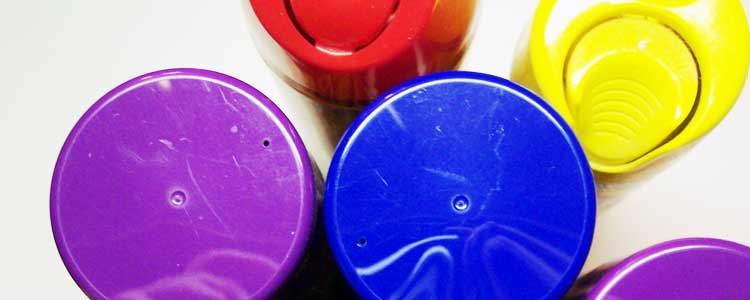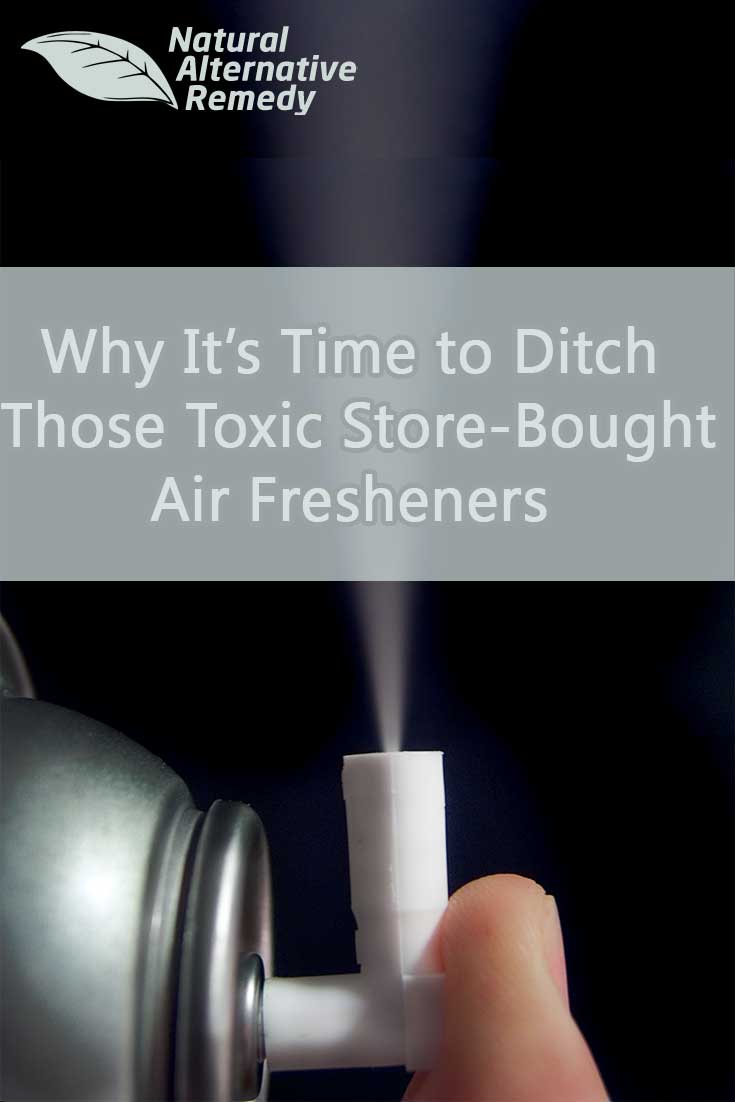
As a culture, we have become obsessed with making things smell nice. We have been told in far too many commercials that our dirty laundry, homes, and cars all harbor nasty, stinky smells. To make matters worse, they tell us that we eventually become immune to some of our environment’s unique smells, meaning that we’re fighting a constant and losing battle with our own (alleged) stink. To combat the smell, we are sold chemical-laden air freshener sprays, scented candles, and even diffusers that plug into our electrical sockets. These solutions not only claim to attack the offensive odor, but to leave the pleasant smell of Angel Whispers® or Treehouse Memories™ lingering in our happy nostrils. And yes, those are honest to goodness trademarked scents offered by two of the biggest names in odor elimination business. But those toxic air fresheners and odor eliminator products aren’t all they’re cracked up to be. Here’s why.
What’s Toxic About Air Fresheners
Despite the naturally luscious meadow and flower-filled scenes prominently featured on the packaging, most air fresheners are doing everything but creating a healthy, fresh atmosphere in your home. Many of the chemical substances merely mask unpleasant smells, while others claim to “eliminate” odor (just check out the section on 1,4-DCB to find out why the word eliminate is in huge ironic quotation marks). Though sometimes effective, these products are spraying and dispersing more then just lovely scents into the air that you and your family breathe. Some of the suspect ingredients cause immediate issues like allergic reactions while others are the subjects of study with respect to the accumulation effect, or the build up of chemicals over time with prolonged exposure. These chemical ingredients are even found in those products labeled “all-natural.” Check out some of the not-so-friendly substances found in common air fresheners:
Phthalates
Phthalates have recently become a subject of growing concern, even more so today as they are found in many household products from plastics in children’s toys to nail polish and yes, air freshener products. They are synthetic preservatives, but they do much more than preserve. When phthalates enter the bloodstream, for instance, they can alter hormone levels and cause reproductive issues and developmental disorders. These hormone disruptors make the air freshener products in which they reside especially dangerous for infants and children.
Phthalates have also been linked to allergic symptoms and asthma when introduced into indoor environments like your home, and we assume that you’re not spraying Fresh Mountain Morning® in your backyard or at the park. So every time you spray conventional air fresheners into the air, you are at a greater risk of inhaling these toxic chemicals or having them land on your skin to be absorbed. To make matters worse, phthalates that are known to cause health concerns like DEP, DBP, and DIBP are not typically listed on the ingredients label.
1,4-Dichlorobenzene (1,4-DCB)
1,4-DCB is a known animal carcinogen and EPA-registered pesticide that has been linked to irritation of the skin, throat, and eyes as well as asthma. It can be found in common air fresheners, toilet bowl cleaners, mothball products, and now the bloodstreams of 96% of Americans (presumably because of its prevalence in our home cleaning products). Why is it used? Because it’s effective. 1,4-DCB works by coating and numbing (or as some say, attacking) the receptors in the nose to inhibit the sense of smell and with it the ability to smell odor – and everything else. It is the chemical behind the great illusion of freshness: if you cannot smell it, does it still smell? The answer is yes, and your body certainly isn’t going to thank you for impairing its senses just to avoid the stench.
Artificial Fragrances and Perfumes
There is also a growing awareness that when you see “fragrance” listed on the ingredients label, it can mean any number of things including “chemical ingredient the manufacturer didn’t want to list.” It’s one of the major FDA loopholes in personal care products regulations. While manufacturers are required to list all chemical ingredients in a product, “fragrances” and “trade secret formulas” are exempt from that particular rule. It’s no wonder then that so many of us seem to have sensitivities to fragrances. These sensitivities can range from minor headaches and dizziness to full-blown migraines. Some are even known to trigger allergic reactions and asthma attacks. Despite our desire to be optimistic, we can’t help but advise that when you’re not certain of what you’re spraying (as is the case with most air fresheners), assume that you shouldn’t be spraying it. And given the other common substances found in air fresheners, unscented options are not necessarily any safer.
Other Chemicals and Allergens
Of course, our final category is the catch-all category. It is the place where we list the substances that can be found in your run-of-the-mill air freshener products that as a naturally-minded person, you likely don’t want floating around in your home: think parabens, formaldehyde, benzene, styrene, methyl pyrrolidone, among others.
Other Toxic Air Fresheners: From Candles to Plug-Ins
While most of the little research on toxic air fresheners has been limited to the substances released by the convenient pump and aerosol spray solutions, those other air freshener products aren’t off the hook. Many have opted for the scented candle collection over the sprayable counterparts, perhaps in part to find a more romantic solution to their supposed stench problem or as what might appear as a more “natural” option. Let us dissuade you of that notion.
First and foremost, we here at NAR are generally not ones to advocate the inhalation of anything other than the purest air you can find. That air generally does not include the smoke and burnt particles dispersed by burning incense or your favorite relaxing bath time candle. To make matters worse, most scented candles are made of paraffin wax, a petrochemical by-product of the oil industry. The black soot you’ve become accustomed to seeing with each burning session is known to be toxic, particularly in the scented varieties, and it doesn’t just end up on the candle container. This toxic soot is an added bonus to the likely artificial perfumes and fragrances used to scent the candle in the first place (see above for why this is not a welcomed addition in our homes). It’s not surprising then that the EPA conducted a study in 2001 in which they deemed incense and some candles a source of indoor air pollution. But we’re not here to rain on your candle party. While there are some better-burning alternatives, like soy and beeswax candles, we prefer to opt for the cleanest natural solutions, which brings us to plug-in diffusers.
While the idea of diffusing scented oils sounds like a great alternative, you get a bit more than you bargained for when you rip open that plastic packaging and plug in your new diffuser. Skipping over similar lists of not-so-natural ingredients and fragrances, the EPA has also found that chemical reactions between the ingredients in many home air freshener diffusers actually diffuse harmful indoor smog. So much for keeping your air clean.
Natural Alternatives to Toxic Air Fresheners
We could go on, but we think you get the picture. It certainly doesn’t take much research to come to the same conclusion we have: that it’s time to ditch the dangerous in favor of the truly safe and natural. But now that you’ve emptied your cabinets of all that is chemically suspect, what do you do when odors invade? We’ve compiled our favorite natural air freshener alternatives and DIY home deodorizers to combat everything from gross garbage to lingering dirty laundry without the toxic chemicals.

